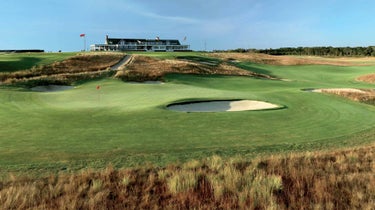Inside GOLF’s Top 100 Courses vote: How we decide our rankings

Ninety-seven handpicked panelists determine our rankings.
getty
There is only one variable in the voting process for GOLF’s World and U.S. Top 100 rankings: the ballot.
For the newly released 2020-21 U.S. list, each panelist was provided a list of 489 courses. Beside that list of courses were 11 “buckets,” or groupings. If our panelists considered a course to be among the top three in the country, they ticked that box. If they believed the course to be among Nos. 4-10 in the U.S., they checked that box, followed by 11-25, 26-50, and so on.
Panelists were also free to write in courses that they felt should have been included on the ballot (we had fewer than a handful of such additions in the U.S. vote).
Points were assigned to each bucket; to arrive at an average score for each course, we divide its aggregate score by the number of votes. From those point tallies, the courses are then ranked accordingly. It is an intentionally simple and straightforward process. Why? Because it invariably produces results that are widely lauded. Like the game itself, there’s no need to unnecessarily overcomplicate things.
The key to the process is the experience and expertise of our panel. Hailing from 15 nations and all the worldwide golf meccas, each of our 97 handpicked panelists has a keen eye for architecture, both regionally and globally.
Style up for your next Top 100 outing
start shoppingTypecasting our panel would be impossible, except to say they all share a golfing wanderlust. More than 50 years separate our youngest panelist from the oldest. Playing abilities vary from plus-handicaps to those in the low double digits. If 30 panelists have seen a course, you are almost assured that every set of tees was used.
Many of our panelists have played more than 1,000 courses in 20-plus countries. In the rankings world, experience is essential, as our raters must be able to judge courses relative to one another. Communication between panelists is enhanced by maintaining a relatively small, tight group.
Because we don’t prescribe a set method to assess courses as other ranks do, no one opinion carries the day — our rank is a democracy. Some panelists believe that enjoyment is the ultimate goal, and thus prioritize design attributes such as width and playing angles, while frowning on upon having to constantly hunt for balls in thick rough. Other panelists value challenge and the demands of hitting every club in the bag. Still others consider a course’s surroundings and overall environment of paramount importance, thereby emphasizing the setting and naturalness of the course. In the end, allowing raters to freely express their tastes is what produces the desired eclecticism in our Top 100 lists.
Panelist integrity is vital. Voters with any ties or associations to eligible courses must flag such conflicts. Any vote that falls outside the statistical norm is investigated. Panelists know not to let the quality of their play influence their ballot — same for a luxe experience or clubhouse. While opulence may make for a more a memorable outing, it’s not what GOLF’s course lists are about. Our focus is on design and architecture. We study the course, not the trappings around it.
Our pledge to you with each and every ranking is that we put forward our best, most earnest effort. Ultimately, you are judge and jury of whether we’ve succeeded.
Let us know how we fared at golfletters@golf.com.














